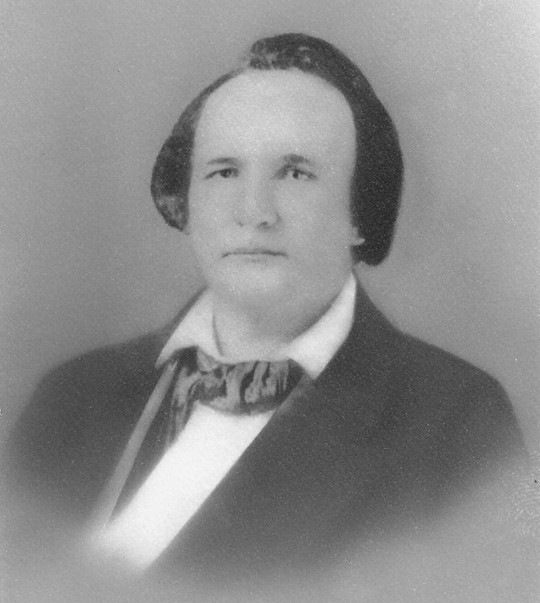Royston Town House (c.1845)
Introduction
Text-to-speech Audio
The Greek Revival house at the top of the hill was the town residence of Grandison D. Royston, a well-respected lawyer who also owned a plantation several miles northwest of town on the Southwest Trail. Easily identified by its colorful “four seasons” sidelights and large center hallway, the Royston Town House is mostly decorated to represent the styles of 1840-1860. Besides an attorney, Royston was an experienced statesman, serving as the first state representative for Hempstead County and Speaker of the Arkansas House of Representatives. During the Civil War, he served one term as a congressman in the Confederate Congress in Richmond, Virginia. He also served as a delegate for two Arkansas constitutional conventions in 1836 and 1874. Guided tours are available of the building. Visit the Historic Washington State Park Visitor Center for more information.
Images
Royston Town House (c.1840)

Grandison Delaney Royston

Backstory and Context
Text-to-speech Audio
Grandison Delaney Royston was born in Carter County, Tennessee on December 14, 1809. He was a cousin to U.S. President Zachary Taylor. By 1830, Royston had established his law practice in Washington, Arkansas. In 1835, he married Clarissa Bates of Little Rock, Arkansas. He was elected to represent Hempstead County at the Constitutional Convention that established the state of Arkansas in 1836 and was then elected to be the first state representative of the county in Arkansas House of Representatives. At the session, he was present at the knife stabbing between Rep. J.J. Anthony and the Speaker of the House, John Wilson. Royston tried to put a chair in between the two gentleman but was unsuccessful in stopping the conflict. After the event, Royston was elected as Speaker of the House to replace John Wilson.
The house was also “L”-shaped: the left-back room was a porch, but in the 1840s Royston had the space enclosed and turned into a home office/guest room with an exterior entrance. As hallways served as social spaces then, the main center hallway is wide enough for large gatherings, with doorways at either end which could be opened to allow a breeze through. As was the practice in the early 1800s, the bedrooms were located at the front of the building. A bed and army chest belonging to Royston himself sit in the master bedroom. The dining room is in the right back, closest to the separate kitchen, which sat in the corner of the present-day fencing. The no-longer existent Alexander Street ran closer to the back of the house, which meant visitors could make it easier to Royston’s home office. In this office is one of Royston’s desks, which is also full of books belonging to his practice.
Sources
Brooke, Steven. Historic Washington, Arkansas. Gretna, Louisiana. Pelican Publishing Company, 2000.
Medearis, Mary. Washington, Arkansas : History on the Southwest Trail. Hope, Arkansas. Copies + Office Solutions, 1984.
Williams, Charlean Moss. The Old Town Speaks : Washington, Hempstead County, Arkansas, gateway to Texas, 1835, Confederate Capital, 1863. Houston, Texas. The Anson Jones Press, 1951.
Williams, Joshua. Washington. Images of America. Charleston, South Carolina. Arcadia Publishing, 2014.
Arkansas Department of Department of Parks, Heritage and Tourism
Historic Washington State Park Collection
